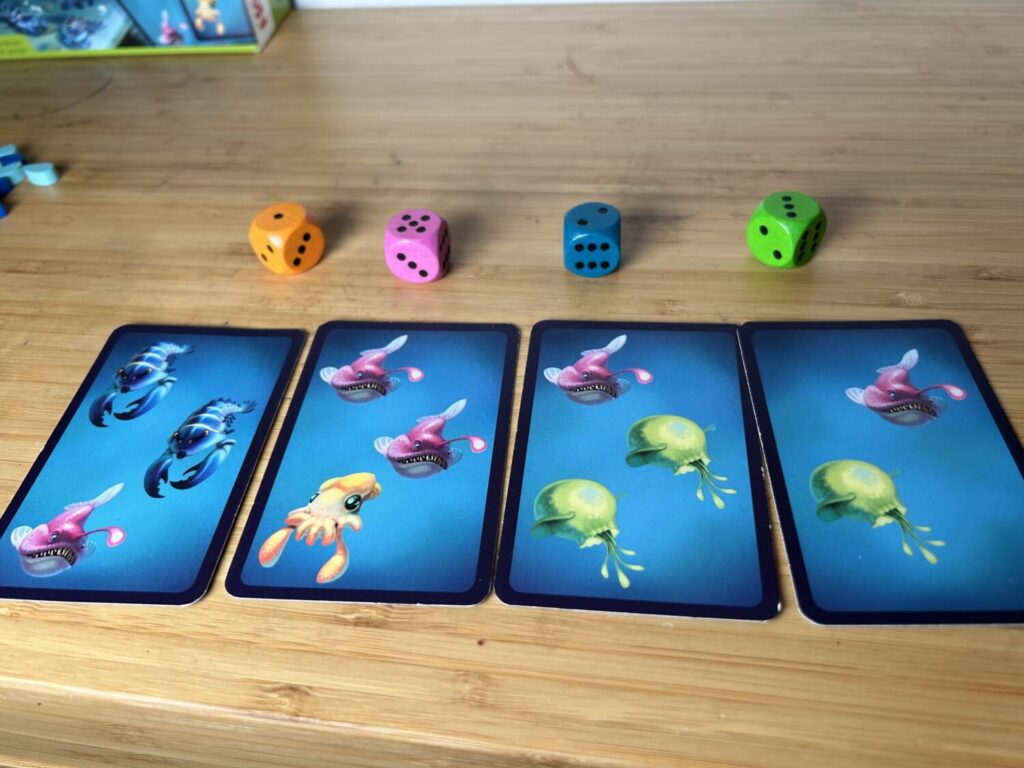Is perfection possible? Probably not. Regardless of the context, it seems the best you can hope for is to feel equipped to pursue perfection, aware that you’ll never attain it. It’s not for everyone. The better you get at anything, the more your skill improves, the more obvious smaller mistakes become. This is part of why I’m fascinated by Olympic athletes. You seek perfection and forever know that you could have done better. It must take a remarkably self-assured person.
The Seaweed Is Always Greener
Undersea Explorer is a charming, simple game. The cards, filled with wonderfully realized illustrations of fish, get spread out in the middle of the table. They’re meant to overlap, to obscure what lies in the deep. One player, it doesn’t matter who, rolls the four dice. Each is the same color as one of the four types of fish. Your goal is to collect as many of each fish as indicated by the corresponding die. Easier said than done. The fish come in various quantities and combinations. It’s rarely one fish per card.
Once the dice are rolled, it’s a free-for-all. With one hand behind your back, you compete in real time against everyone else to collect your fish. You won’t, and I couldn’t possibly emphasize this enough, succeed, but you can get close. The round continues until one of the players says “Ascend.”
At that point, everyone counts up their fish, one color at a time. You receive one point for each fish you are missing, and each fish you have in excess. The goal is to end with the game with as few points as possible.

You Dream About Going Up There
There are some valuable skills taught here, including estimation and risk assessment. It’s very, very hard to get exactly the numbers you need in every color. Nailing two and minimizing the margin of error for the other two is probably the best way to go. It takes kids a while to warm up to that, but they get there. What you do get right off the bat is a space in which kids can giggle and have fun. They learn the ins and outs as they go, but the fun is there from the jump.
I played Undersea Explorer for the first time a few minutes before running it with a group of six-year olds. I spread the cards out, I rolled the dice, and I attempted to gather the exact number of all four fish in a relatively short amount of time. I was almost immediately stymied. I kept ending up with too much of one and not enough of another, and that was playing only against myself. It was then that I realized: Undersea Explorer is hard.
The trick, of course, is to accept an imperfect performance. Children are typically okay with that. I’m not that well-adjusted.













I love the idea of having to mitigate the damage in a game. I think this is a sign of good game design — there is no perfect play. So you have to work at this and that while taking a risk on the other thing.
I think this is a good kids game. And if I had kids in the right age group anymore, I would get this in a heartbeat.